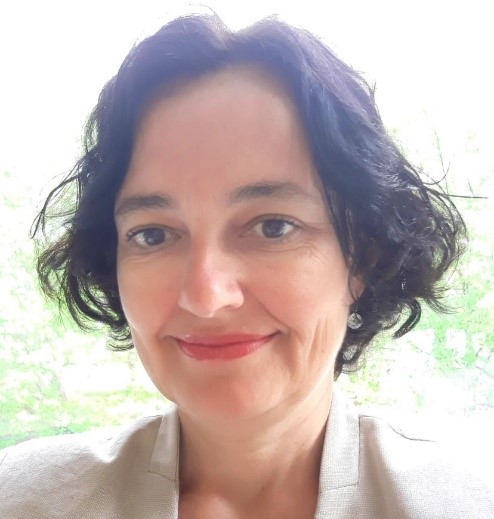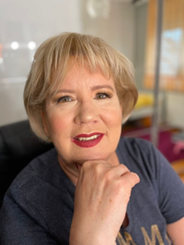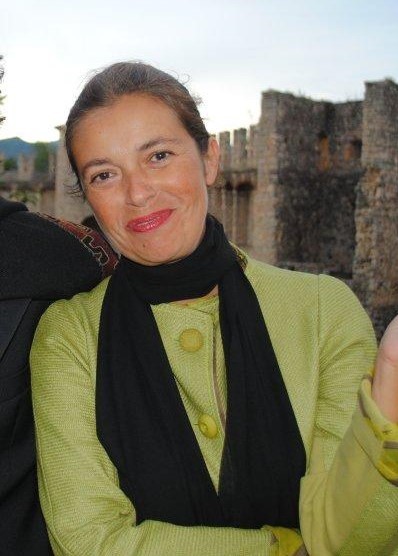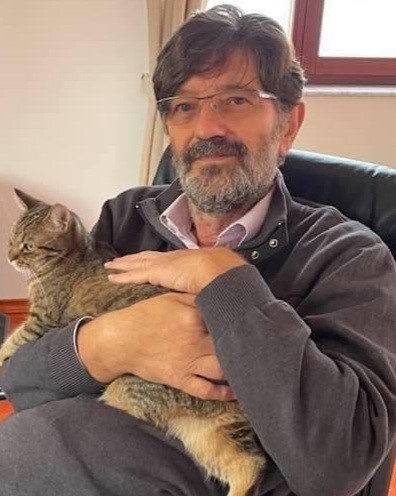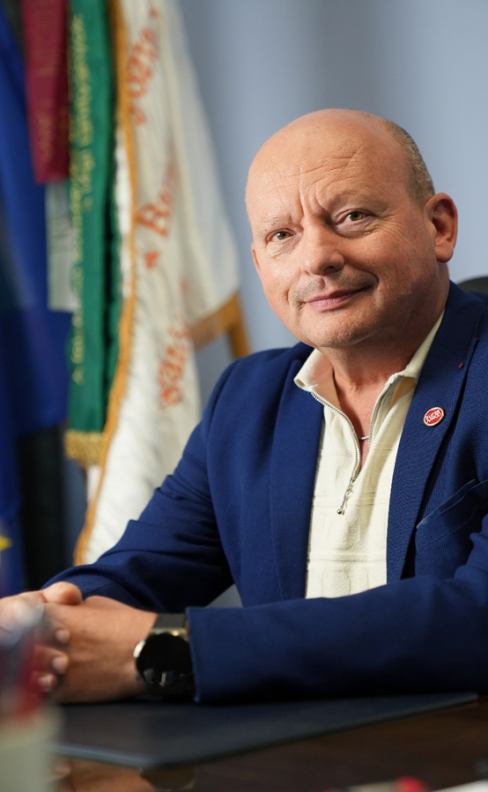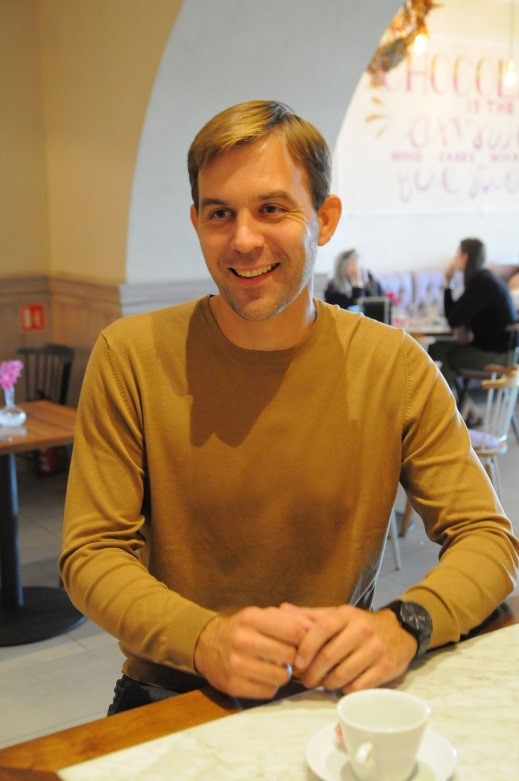Keynote speakers
PLENARNI IZLAGAČI / KEYNOTE SPEAKERS
Marta Likardo, University of Maribor, Faculty of Education, Slovenia
Marta Licardo is an Associate Professor at the University of Maribor, Faculty of Education, Slovenia. She is Head of the Department for Preschool Education at the Faculty of Education. Her research interests include pedagogy, didactics, social sciences in early childhood education, inclusion, education of children with special needs and immigrant children. She is also the Country Coordinator for European Early Childhood Education Research Association for Slovenia. She leads or participates in several projects related to her research interests on both national and international level (see more: https://pef.um.si/en/kontakt/assoc-prof-dr-marta-licardo/).
Kompetence vzgojiteljev predšolske vzgoje pri vključevanju otrok priseljencev
Uspešno vključevanje otrok priseljencev na vseh ravneh izobraževanja, zlasti na predšolski ravni, je izziv v številnih državah EU. V predavanju bo pojasnjeno, kateri so najpogostejši izzivi pri vključevanju otrok priseljencev, katere splošno sprejete inkluzivne smernice so lahko koristne za vzgojitelje in druge strokovne delavce, pomen in praktične posledice medkulturne vzgoje ter kako premagati ovire pri sodelovanju s starši priseljenci. Kompetence vzgojiteljev pri vključevanju otrok priseljencev in kompetence vzgojiteljev za sodelovanje s starši priseljenci, bodo v ospredju dveh predstavljenih raziskav, objavljenih v revijah European Early Childhood Education Research Journal, 2021, in Cogent Education, 2022. Namen prve raziskave je bil analizirati specifične napovednike kompetenc vzgojiteljev pri delu z otroki priseljenci. Natančneje, kako različni pogoji (demografske spremenljivke in podpora iz okolja) ter medosebne veščine (pozitivne vrednote učiteljev, čustvene kompetence, pozitiven odnos vzgojiteljev do poučevanja otrok priseljencev) napovedujejo kompetence vzgojiteljev predšolske vzgoje pri delu z otroki priseljenci. Rezultati hierarhične regresijske analize v prvi raziskavi so pokazali, da so medosebne veščine močnejši napovedovalci kompetenc vzgojiteljev kot drugi (npr. demografski) pogoji. Rezultati mrežne analize kažejo na posebne poglobljene povezave med kompetencami vzgojiteljev in analiziranimi spremenljivkami. Raziskava je pomembna, saj združuje ekološke pogoje kot kontekstualne dejavnike in medosebne veščine, z namenom boljšega razumevanja, kako podpirati vzgojitelje v večkulturnem okolju. Namen druge predstavljene raziskave je raziskati sodelovanje s starši priseljenci in ugotoviti vpliv več spremenljivk, ki bi lahko prispevale k boljšemu razumevanju kompetenc vzgojiteljev pri sodelovanju s starši priseljenci ter k temu, kako vzgojitelje bolje podpreti v teh prizadevanjih. Rezultati so pokazali, da so okoljski pogoji (npr. spol, stopnja izobrazbe, delovno mesto, podpora izobraževalnega okolja) pomembni napovedniki sodelovanja s starši priseljenci. Vzgojitelji moškega spola, vzgojitelji, katerih delovno mesto je vzgojitelj predšolskih otrok in ne pomočnik vzgojitelja, ter vzgojitelji z višjo stopnjo izobrazbe so poročali o bistveno boljšem sodelovanju s starši priseljenci kot vzgojiteljice in vzgojitelji z nižjo stopnjo izobrazbe. Glede kompetenc vzgojiteljev, so rezultati pokazali, da so medosebne in strokovne veščine (npr. pozitivne vrednote, pozitiven odnos do poučevanja otrok priseljencev in zaznano neprimerno vedenje otrok priseljencev) pomembni napovedniki poročanega sodelovanja s starši priseljenci. Rezultati obeh raziskav so praktičnega pomena za vzgojitelje, starše priseljence in vodstveno osebje.
Preschool Teacher Competencies in the Inclusion of Immigrant Children
Successful inclusion of immigrant children on all levels of education, especially in early years education, is a challenge in many EU countries. The lecture will address the following topics: (1) what are the most common challenges for inclusion of immigrant children, (2) which generally accepted inclusive guidelines can be useful for teachers and professionals, (3) the meaning and practical implications of intercultural education and (4) how to overcome obstacles in collaborating with immigrant parents. Both teacher competencies in the inclusion of immigrant children and their competencies in terms of collaboration with immigrant parents will be the focus of the presented studies, two of which were published in European Early Childhood Education Research Journal, 2021 and Cogent Education, 2022. The purpose of the first research study is to analyse the specific predictors of ECE teacher competencies in working with immigrant children. More specifically, the question is how well do various ecological conditions (demographic variables and support from environment) and interpersonal skills (teachers’ positive values, emotional competencies, teachers’ positive attitudes toward teaching immigrant children) predict the competencies of ECE teachers in working with immigrant children. The results of the hierarchical regression analysis in the first study revealed interpersonal skills as stronger predictors of teacher competencies than ecological conditions. The results of network analysis suggest specific in-depth relations among teacher competencies and the analysed variables. The study is important because it combines ecological conditions as contextual factors and interpersonal skills to better understand the ways for supporting teachers in a multicultural environment. The purpose of the second presented research study is to research the collaboration with immigrant parents from a more complex perspective and determine the influence of several variables that might contribute to a better understanding of teacher competencies in collaboration with immigrant parents, as well as ways to better support them. The results found that environmental conditions (e.g., gender, level of education, job position, educational environment support) are important predictors of collaboration with immigrant parents. Male teachers, teachers whose job position is ECE teacher rather than assistant teacher, and teachers who have higher levels of education reported a significantly better collaboration with immigrant parents than female teachers and teachers with lower educational levels. When it comes to teacher skills, the results have suggested that interpersonal and professional skills (e.g., positive values, positive attitudes towards teaching immigrant children and perceived immigrant child misbehaviour) are important predictors of reported collaboration with immigrant parents. The results of both studies are of practical significance for teachers, immigrant parents and management staff.
Irena Klasnić, Faculty of Teacher Education, University of Zagreb (Hrvatska)
Irena Klasnić is an Associate Professor at the Faculty of Teacher Education, University of Zagreb. She teaches the following courses: Theory of Teaching and Education, Curriculum, Assessment in Primary Education, School Regulations and Documentation, and School and Family at the Department of Teacher Education Studies. She is the author and co-author of about fifty scientific and professional papers. She is also the co-author a university textbook Child, upbringing and family. She has actively participated in numerous scientific and professional conferences in Croatia and abroad, and has reviewed more than thirty papers. She is a member of scientific and program committees of national and international conferences. Her research interests include didactics, school and family pedagogy and free time pedagogy.
Child and Space in the Pedagogical Discourse
The notion of space has multiple meanings, either referring to the totality of dimensional relationships and directions, a part of an area, three-dimensional real space with Euclidean geometry or the category of material world. From the pedagogical perspective, space has an important role in a child’s life. Therefore, it is not surprising that space is considered as the third educator, not only in the framework of the Reggio pedagogy, where it originated, but also in a broader sense. In the kindergarten and school context, space includes the interior and exterior architecture and human factor as well. In any institution, space is a specific microuniverse – space made up of all peculiarities pertaining to the stakeholders in the educational process. Here, various influences are at work, and various types of interdependences establish themselves between children/pupils, kindergarten teachers/teachers, parents and other adults, all of which are important for children’s growth and development. Nowadays, children are brought up in different types of spaces, thus requiring an individual approach to each child. The quality of space has been changing significantly at a rather fast pace: private space is becoming public, and the real space is being replaced by virtual space. In the contemporary pedagogical research, the sacrificing of space is becoming a frequently analysed and critically examined topic: children are replacing the outdoor play space with indoor space, parents lack space for quality time with their children, and peer play is being replaced by cyberspace. In order to increase the positive and reduce the negative influence on children, space must be designed in line with pedagogical guidelines. Such space should be safe, inclusive, encouraging, and directed towards positive values. Furthermore, it should encourage children’s activity, exploration and creativity. This presentation will be based on the pedagogical understanding of multidimensional space, with special emphasis placed on the challenges that kindergarten teachers, teachers and parents encounter in relation to the quality use of space in the context of ensuring a holistic development of children.
Roberta Mineo, University of Modena e Reggio Emilia (Italy)
Roberta is a tenured academic, Senior Research Fellow at the University of Modena and Reggio Emilia, serving as Chair of the Erasmus Committee and other mobility programs, with more than thirty different international partners worldwide. She teaches Psychodynamics of Family Relations, Clinical Psychology and Group Processes, and acts as the Program Chair of the first Industrial PhD in Reggio Childhood Studies, where she has lead all introductory seminars for the first-year doctoral candidates since its opening. Apart from that, she has been a visiting Professor at NYU Law School upon invitation by professor Jerome Bruner. She is also the Chair of the Governance and Bylaws Committee of the International Association for Group Psychotherapy and Group Processes (IAGP), initiator of the FOYT program for young professionals, designer of international conferences like Ryla (Rotary Youth Leadership Award) and FLAM (Femininity, Leadership, Authority, Masculinity), NGOs’ advisor (like CISS Morocco), and a researcher at educational institutions (such as Rakhawy Research Center in Cairo).
The Role of Environment and Space in the Reggio Emilia Approach
The theme of educational spaces stirs up a fundamental question: does environment constitute only one part of the educational process or is it like a neural network going through the whole body of education? In 1916, Dewey had laid the groundwork for one of the pillars of the Reggio Emilia Approach (REA): individuals seldom exist in isolation; instead, they usually interact with the objects and entities around them. The environment is made of the specific continuity of the surroundings with one’s own active tendencies. […] In brief, the environment consists of those conditions that promote or hinder, stimulate or inhibit, the characteristic activities of a living being. Thus, the environment may be regarded as a space or a field where the networks of relationships, interconnections, and interactions between entities occur. “Reggio Emilia is an inspirational early years’ approach that is not an educational model in the formal sense, with defined methods, teacher certification standards, and accreditation processes,” but rather one that “embraces a progressive vision of education in seeking new kinds of schools for young children” (Aden & Theodotou 2019). In the Reggio Emilia Approach, attention to furnishings, shapes, colors, architecture, materials and to the relatedness of spaces and environments implicitly defines the roles of the pre-schools and their activities. The REA environment is a multi-dimensional place, a hybrid space that is shaped by the relationship created within it. It acts a multi-sensory place not so much in the sense of being simply rich in stimuli but having different sensory values, so that everyone can tune in according to their own individual reception characteristics. In other words, standard univocal space solutions cannot be conceived for everyone. The REA school is a collective environment, based on participation and community management, on collegiality and conviviality, on shared values and objectives. Creative spaces such as the atelier and focus on the ecology of the environment are paramount to understand the success of the REA educational approach.
Jure Zovko, University of Zadar (Hrvatska)
Jure Zovko has been a Full Professor of Ontology at the Department of Philosophy at the University of Zadar and a senior associate with the same position at the Institute for Philosophy (University of Zagreb, until 2021). Since 2008, he has been a permanent member of Institut international de philosophie (Paris), and since 2010, he is also full member and a president of L’ Académie Internationale de Philosophie des Sciences (Bruxelles), a vice-president of the Internationale Hegel-Gesellschaft, a co-publisher of the journal Hegel-Jahrbuch (Duncker & Humblot Berlin) and publication series Hegel-Forschungen (Duncker & Humblot Berlin). He is the editor of the publication series Philosophy in International Context“ (Lit Verlag Berlin), as well as a member of the Steering Committee of FISP (Fédération Internationale des Sociétés de Philosophie). He has been a guest professor in Vienna, Mainz, Tübingen, Münster, and Xi’an. Finally, he has been awarded the medal – Order of Danica Hrvatska – for his scientific contributions.
Learning from Children – Spaces of Philosophy
One of the most well-known characterizations of philosophy is that it begins with admiration (thaumazein), as Plato asserted in the dialogue Theaetetus (155e). Considering this definition, it is then natural, or even self-evident, that philosophy should begin in childhood. Children, unlike adults, are capable of admiration and wonder when it comes to everyday life events. The ability of admiration is a basic determination of human being, of our form of life. It is also present in philosophers who put rationality, reasonableness and argumentation in the foreground of their thinking, as was the case with Plato, Pascal or Kant. Kant’s famous sentence, which stands as epitaph on his tombstone, fascinates the human psyche to the deepest: „Two things fill the mind with ever new and increasing admiration and reverence, the more frequently and persistently one’s meditation deals with them: the starry sky above me and the moral law within me“ (I. Kant, Academy Edition, Critique of Practical Reason V, 161). Children undoubtedly admire the starry sky more than adults, for whom the observation of the sky is burdened by their own knowledge and education, i.e., by their “second nature”. They prefer to look at the sky through a telescope rather than with their own eyes. Analogous could be said for the morals. The adult and educated people intensively discuss morality, explore the possibilities of moral reasoning, analyze arguments concerning moral realism and relativism, whereas children have a primal sense of morality – they are very sensitive to injustice and evil. We can see this especially on the example of children’s birthdays, when the birthday cake must be cut in equal parts, so that no child feels hurt because of the violation of equality. Children also sometimes have a more original sense of beauty than adults, their look does not suffer from ugliness. Aesthetic predicates “beautiful” and “ugly” also have a moral connotation in the lives of children. The sense of beauty in children, as with Greeks in classical antiquity, was always associated with goodness, which came to light in Plato’s notion of “kalokagathia” (beautiful and good). Children have a greater sense of tolerance and better recognize others in their otherness than the adult persons. They are against racism because of their inner feelings, they accept children in their company without asking about their religion, without looking at their skin color. Adults could certainly learn a lot from the tolerance that reigns in the kingdom of children. In my opinion, philosophizing with children means to further develop the good that is already there as a seed and a bud in their minds. Plato has convincingly demonstrated in the VII Book of the Republic that the education of children should proceed as in play (paizontas παίζοντας R 537a), without coercion and pressure. The qrowing up process in children should be filled with fun and joy. The same should happen to anyone who is interested in philosophy.
László Varga, University of Sopron (Hungary)
Habil. PhD. László Varga, associate professor, is the Dean of Benedek Elek Faculty of Pedagogy at the University of Sopron, Hungary. He is the founder and leader of a unique early childhood neuropedagogical research group and laboratory in Hungary. Together with prominent professionals, he has established an international research and counselling network. He is a member of international advisory groups of both American and European educational scientific journals. In the context of research and teaching scholarships, he has represented Hungarian higher education and educational science all over the world. His main research fields include childhood’s effect on individual life paths, children’s worldview and children’s culture, childhood progress and development, constructivist pedagogy, early childhood neuropedagogy and competence-based education. He was awarded with Apáczai Csere János Prize for his outstanding academic performance in promoting educational practice.
Early Childhood Neuropedagogy: An Opening Window to the World
“Brains are built not born” (Dr. Jack Shonkoff, Harvard University)
An Early Childhood Neuropedagogy International Research Group & Lab (NeuPedLab©) was established by Laszlo Varga at the Benedek Elek Faculty of Pedagogy in Sopron, Hungary (Varga & Szécsi, 2018). The latest research emphasizes childhood as a key factor. In recent years, research on young children’s early brain and emotional development has underscored its importance for later development. However, integrating this ‘Brain-Based, Heart-Felt’ research into classroom practice will require meaningful dialogue between educators and neuro scientists to inform both research and ECE institutions. Linking brain and EQ research to ECE is extremely valuable to our understanding of children’s development and learning. This presentation will provide educational sciences with new information and data, while also modifying and complementing the content of the nursery school teacher and early childhood educator trainings, as well as the innovation of early childhood educational and research facilities (Szécsi, Varga & Mák, 2018). The human brain is a mysterious organ that presents serious learning challenges to scientists and child educators. Understanding how neuroscience can inform education strategies and finding out what teachers want and need to know about the ways children learn are two key drivers behind the neuro-education initiative. At birth, the brain is remarkably unfinished. The period up to eight years is considered to be the peak time for brain development. From birth to about the age of eight, the brain behaves as a super-sponge. This is the brain’s most absorbent stage, where it actively learns from its environment. ‘Windows of opportunity’ are used to designate sensitive periods in children’s lives when specific types of learning take place. Information flows easily into the brain through ‘windows’ that are open only for a short period of time. Then the ‘windows’ close, and much of the fundamental architecture of the brain is completed, without the likelihood of changing to a greater degree in the time to come. It is a central question what to give and what not to give to our children in their first years. Children who have little opportunity to explore and experiment with their environment may fail to fully develop the neural connections and pathways that facilitate later learning. Furthermore, exposure to trauma or chronic stress can make children more prone to emotional disturbances and less able to learn. Scientists are continually learning more about how young children’s brains develop. At the same time, teachers are looking for effective strategies to help children use their brains to their fullest capacity (Mák, Szécsi & Varga, 2018). This presentation contributes to this dialogue by summarizing what we already know about the learning process in the brain and suggests how this information might inform the teaching and learning process in the classroom. Intelligent investment is fundamental to establishing a happy life, meaning that there is an unlimited chance and extreme responsibility on our shoulders, since early years last forever.
Vilko Petrić, Faculty of Teacher Education, University of Rijeka (Hrvatska)
Vilko Petrić is an Associate Professor at the Faculty of Teacher Education, University of Rijeka. In 2006, he graduated from the Faculty of Kinesiology at the University of Zagreb, where he enrolled in the postgraduate scientific doctoral study in Kinesiology, majoring in education. By defending his doctoral dissertation entitled “Physical activity level and nutritional standard of adolescents in Istria” on April 20, 2011, he obtained the title of Doctor of Social Sciences in the scientific field of kinesiology. He now has approximately 20 years of working experience at all levels of upbringing and education. He worked as a sports leader for pre-schoolers in the universal sports school “Unisport” in Pula. From 2006 to 2011, he worked as a physical education teacher in Primary school Divšići from Divšići, and in Primary school Vladimir Nazor from Krnica. For the purposes of professional internship (school year 2006/2007), he also worked as a physical education teacher at the Pula High School. Starting in 2010, he got employed in higher education; that is, until 2016, he worked at the Faculty of Kinesiology of the University of Zagreb (on the courses of the mandatory module Kinesiology in Education and on the postgraduate doctoral study of Kinesiology Education), and from November 1, 2016 he worked at the Faculty of Teacher Education at the University of Rijeka (currently working as an Associate Professor) holding courses related to kinesiology education at the undergraduate and graduate university studies Early and Preschool Education. To date, he has published five author’s books, nine chapters in international books and more than 100 scientific and professional papers, as well as presented his work at more than 50 international scientific and professional conferences. He is the leader of the research project “Establishment of a System for Monitoring Physical Activity Using Modern Technology in Early and Preschool Education Institutions” and a collaborator on several international projects related to education. He participates in the work of expert groups for the creation of the National Curriculum and the Curriculum of Physical and Health Culture subjects. The quality of his work is confirmed by many prestigious awards in the Republic of Croatia and around the world, of which the following stand out: the award for the best young scientist in Europe “FIEP Europe Thulin Award” in 2015, and the award of the Foundation of the University of Rijeka for the best scientist in the field of social sciences in 2019. In 2022, he was awarded the Croatian Kinesiology Association Recognition for successful work.
Physical Environment – The Basis of Integration and Complete Motor Development of a Child During the Educational Process?
The early and preschool period is the most sensitive stage in a child’s life (Jensen, 2005). At this age, the physiological processes that occur in the child’s organism are crucial for the development of their potential, and the educator is expected to be an expert who knows how to properly integrate scientific achievements into practice and enable each child to develop them optimally (Petrić, 2019). As a rule, a child develops its potential through movement, which represents their biotic need, and it is precisely the stimulating physical environment that can significantly encourage the child to move and ensure complete motor development (Petrić, Kostadin and Peić, 2018). Institutional upbringing and education, despite modern paradigms, still depends on a structure that often ignores the importance of children’s movement (Petrić, 2021). Establishing the movement as the basis of integrated learning in early childhood education institutions represents one of the greatest contemporary challenges for scientists and a necessity for the preservation and improvement of children’s health (Petrić, 2022). It is extremely important to understand that children’s motor skills should be a part of the integrated kindergarten curriculum. It is not natural for children to observe the world and acquire knowledge from different fields separately, but to apply them in an integrated manner as a single unit in everyday life challenges. It is clear that preschool teachers are presented with costant challenges in relation to organization, preparation and change of the environment that requires movement which is necessary for children to achieve their complete development. Preschool teachers have an obligation to turn the children’s environment into laboratories where they would explore and gain invaluable experiences (Petrović-Sočo, 2007). An environment that is pedagogically prepared to meet the child’s existing needs for movement should be lived on a daily basis, and the educational process should be placed in the function of integrated learning (Vujičić and Petrić, 2021). Children link their environment with personal experiences to the degree of comfortability and the level of stimulation in relation to their interests and needs (Jilk, 2005). A stimulating environment, and the positive experiences of a child in it, lead to the fulfillment of its maximum biological potential and influence the expression of its genes during growth and development, while a non-stimulating environment prevents the same (Vujičić and Petrić, 2021; Vujičić, Petrić and Petrić, 2019). Children’s movement, their independence and interaction are one of the basic characteristics that the space should satisfy (Malaguzzi, 1998; as cited in Petrović-Sočo, 2007). Early childhood education institutions have a significant possibility of influencing complete motor development of children and consequently their quality of life (Vujičić, Petrić and Pejić Papak, 2018). The question is whether it is possible to base the modern paradigm of understanding the child on movement as a natural way of integrated learning, and whether the spaces in the early childhood education institution can be set up in such a way as to encourage complete motor development in children. In order for the above to be possible, preschool teachers should first of all believe in the benefits of movement and be physically active themselves. Only then can they be true promotors of movement and transmit their values to children in a better manner. The fact that almost 80% of preschool teachers in the Republic of Croatia are physically inactive is worrying, which certainly calls into question their readiness and level of intrinsic motivation to integrate movement into everyday educational work (Petrić, Francetić and Vujičić, 2022). As a rule, preschool teachers with more years of experience express a greater need for improvement and strengthening of kinesiology competencies and believe more in the benefits of movement for children in the educational process (Blanuša Trošelj, Žigulić and Petrić, 2022). It is expected that in the future, more and more educators will complete graduate studies and will have a need for lifelong professional training. Teacher faculties should be ready for contemporary challenges in early and preschool education. It is necessary to constantly develop and improve different ways of providing support to preschool teachers for the acquisition of kinesiology (motor) competencies so that they know how to use the potential of the physical environment in children’s best interest at all times, and to encourage integrated learning and optimal comprehensive motor development.
